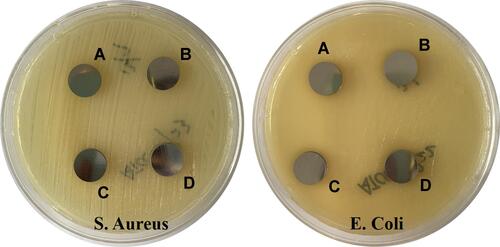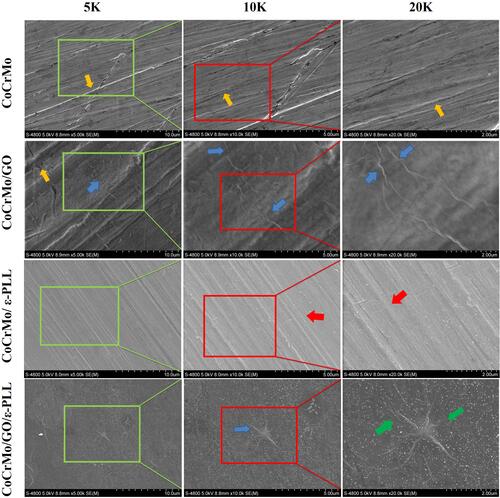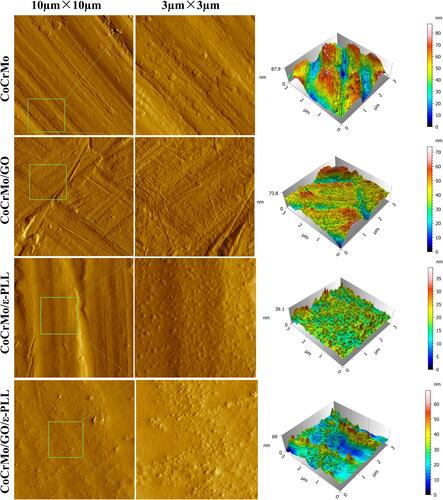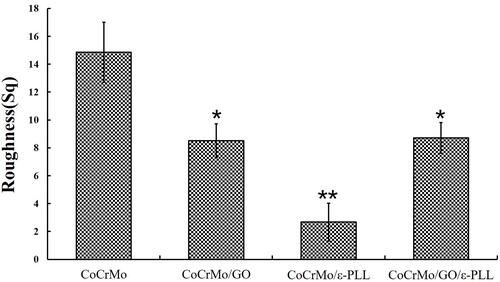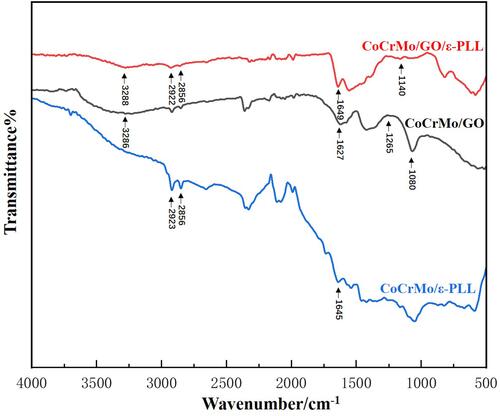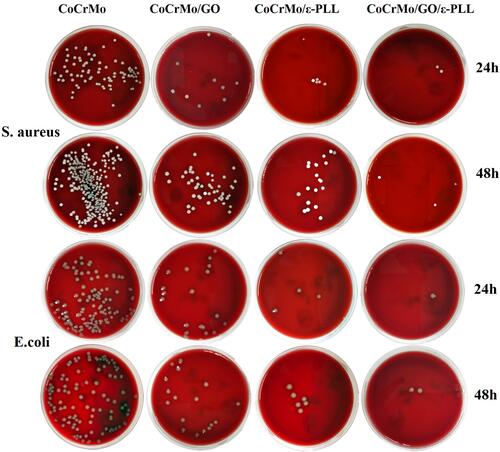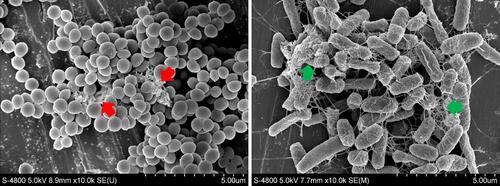Figures & data
Figure 1 The surface appearance of the CoCrMo alloy after coating. (A) CoCrMo; (B) CoCrMo/GO, (C) CoCrMo/ε-PLL, and (D) CoCrMo/GO/ε-PLL.

Figure 2 Orthogonal experimental results. (A) ε-PLL coating under different parameters (E1-E16). (B) GO and ε-PLL composite coating under different parameters (Ep 1-Ep 16).

Table 1 Mean Values of Each Element in Each Group (P>0.05)
Figure 4 Energy dispersive spectra of elements in CoCrMo alloys. (A) CoCrMo; (B) CoCrMo/GO, (C) CoCrMo/ε-PLL, and (D) CoCrMo/GO/ε-PLL.
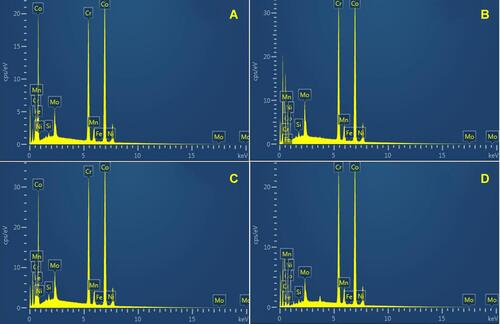
Figure 7 Comparison of the surface hydrophilicity of the four groups of materials (*P<0.05, **P<0.01).
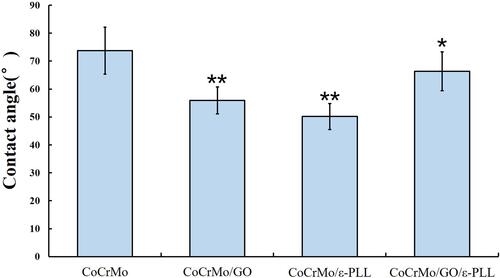
Table 2 Values of the Elastic Modulus and Vickers Hardness (*P<0.05)
Figure 8 Nanoindentation values of each group. (A) CoCrMo; (B) CoCrMo/GO, (C) CoCrMo/ε-PLL, and (D) CoCrMo/GO/ε-PLL.

Figure 10 Morphology of S. aureus ((A) 24 h, (B) 48 h) and E. coli ((C) 24 h, (D) 48 h) on the surface of each group.

Figure 11 Fluorescence staining of living and dead bacteria from different coating surfaces. (A) S. aureus. (B) E. coli.

Figure 13 The relative adhesion rate and antibacterial rate of each group. The relative adhesion rate of S. aureus (A) and E. coli (B) and the antibacterial rate of S. aureus (C) and E. coli (D). *and # P<0.001.
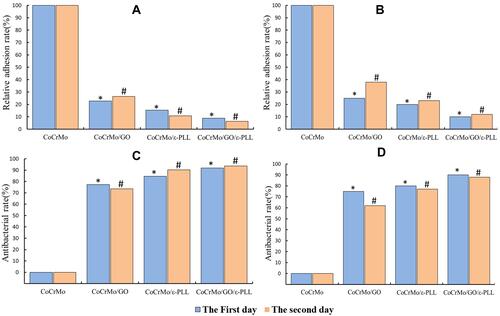
Figure 14 Fluorescence intensity of different samples (*and # P<0.01, ** and ## P<0.001). (A) S. aureus. (B) E. coli.
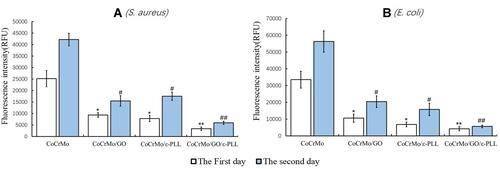
Figure 18 Inhibition zone experiment of each group. (A) CoCrMo; (B) CoCrMo/GO, (C) CoCrMo/ε-PLL, and (D) CoCrMo/GO/ε-PLL.
